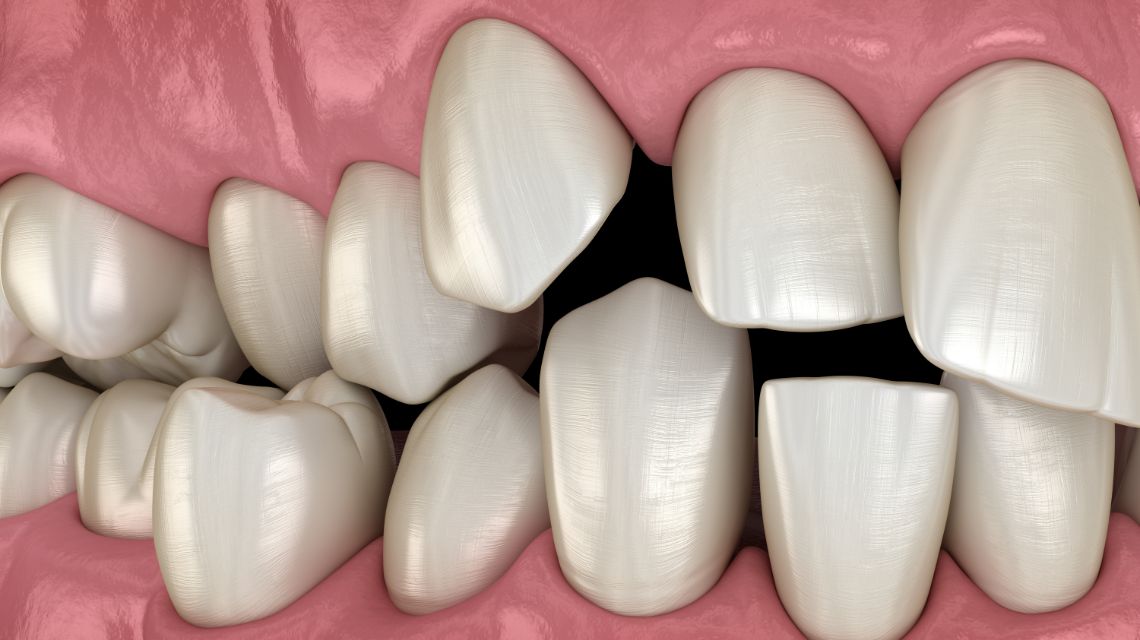
Malcolussion is not a common term that people might be familiar with, however, it's known commonly as a bad bite. When malocclusion occurs, the upper and lower teeth usually don't align as they should and cause severe serious problems requiring surgery as well.
The types of malocclusion of teeth are as follows:
Overcrowding - Caused due to the vacant space between teeth.
Spacing - This issue is usually caused from a young age due to thumb sucking and missing teeth. This issue leads to overcrowding and leads to spacing.
Overbite - In this scenario, the upper front teeth may bite the gum, and even lower front teeth may reach the top of the gums.
Underbite - This is commonly known as anterior crossbite and occurs when lower teeth protract from the upper line of teeth.
Crossbite - In this scenario, the upper teeth protrude outward and bite into the lower teeth.
Why is malocclusion treatment recommended?
Malocclusion treatment, untreated could lead to issues with overall health. It could lead to several problems which may include:
- Decaying of teeth
- Loss of teeth
- Gum disease
- Hindrance in chewing food
- pronunciation issue
- damage to tooth enamel
- misalignment of jaw
Who can perform malocclusion treatment?
An orthodontist dealing with similar issues can take care of malocclusion treatment. According to the treatment required and the type of malocclusion, the orthodontist might suggest orthodontic treatments, braces or even aligners. Serious types of malocclusion might require surgery as well.
How is Maloculasion treatment conducted?
It is advised to visit the dentist between specific intervals for dental checkups. The malocclusion treatment is conducted as follows:
Step 1 - The orthodontist shall discuss your medical history, OTC medications currently consumed and other healthcare conditions before administering any kind of dental care.
Step 2 - The dentist shall then check the jaw and X-rays to understand the condition and to check what type of malocclusion is suffered by the patient.
Step 3 - After all diagnosis is complete, the orthodontist shall either place braces and aligners or remove teeth to tackle overcrowding. In certain circumstances, surgery is conducted to rectify the issue.
What are the benefits of malocclusion treatment?
There are an array of benefits for malocclusion treatment. They are:
- Healthier smiles
- Improved bite and chewing
- Pronunciation is improved
What are the complications of malocclusion treatment?
Several issues may arise if malocclusions are left untreated. However, when conducting malocclusion treatment, there are very few risks. However, with every orthodontic treatment, the most common complications that may occur are:
- Mild toothache and discomfort.
- Gum infection
- Root shortening
Conclusion:
Malocclusion could lead to several oral problems such as overcrowding, crossbite and even overbite. It leads to difficulty in chewing, speaking or biting.
Malocclusion could occur in anyone, young or old. It is always a good practice to visit the dentist for a check-up.
Are you suffering from any type of malocclusion? Request an appointment at Apollo Dental Clinic, Jabalpur Call 1800 1020 288 to book an appointment
The common causes for malocclusions are: Sucking the thumb Improper hygiene Injuries Prolonged pacifier usage
Some of the common symptoms you can look out for are as follows: Pronunciation issues Misalignment of teeth Chewing or biting issues The morphing of the facial structure
Malocclusions could sometimes be hereditary and can't be prevented. However, stopping children from sucking their thumbs could restrict it. Additionally, if there are any lost teeth, replacing them with implants, or bridges can rectify the issue.















































